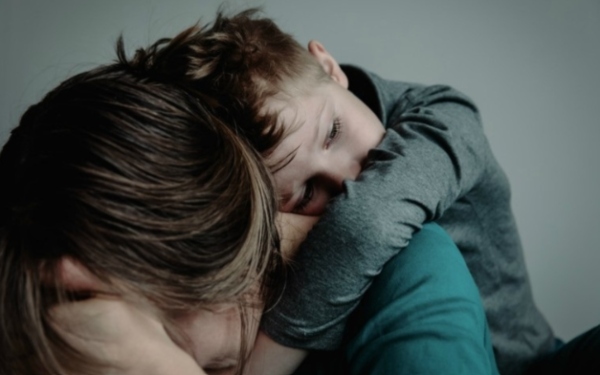
 Addressing concerns of parental substance misuse can be challenging. Increasing knowledge of parental substance misuse can help social workers assess risk and protective factors, improve their confidence in direct work and managing difficult conversations, and inform their interventions with children and young people.
Addressing concerns of parental substance misuse can be challenging. Increasing knowledge of parental substance misuse can help social workers assess risk and protective factors, improve their confidence in direct work and managing difficult conversations, and inform their interventions with children and young people.
This article presents a few key pieces of advice from Community Care Inform Children’s guide on parental substance misuse, which was published in June 2023. The full guide explores the impact of parental substance misuse on parenting behaviours and child wellbeing and how social workers can address concerns with parents/carers and children. Inform children subscribers can access the full guide here. The guide is written by Jessica Roy, a lecturer in child and family welfare and programme director of the BSc Childhood Studies course at the University of Bristol.
Assessing parental substance misuse
It is important to define substance misuse. This helps identify how the issue is presenting within the family.
In the guide, substance misuse is defined as, “the use of alcohol or drugs in a way that results in social, psychological, physiological and legal problems for the person who is using substances and those around them”.
If completing an assessment where there are concerns about parental substance misuse, practitioners should consider:
- Stability and consistency: How consistent and reliable are the parents/carers at meeting the child’s needs? How stable is the household composition? Establish who looks after the child, and if there are routines in place to support the child to attend school/activities on a regular basis.
- Household safety: Is the household environment safe and free from hazards? When and where are drugs prepared, used and disposed of? Is alcohol kept in a safe location? Are children present when substances are used/consumed? Assess if the parents have safety plans or strategies in place.
- Support from another parent or carer: Does the child have a parent or carer residing at home who does not misuse substances? Does the non-using parent know about the substance misuse? What is the quality of their relationship with the parent who is misusing? Assess if the non-using parent/carer provides safe and consistent care for the child if the parent who is misusing is unable to.
- Pattern and severity of substance misuse: Parents may be unwilling to disclose this information. However, it is vital to assess what the child may be seeing and experiencing. Evaluate what, when and how substances are being misused. How does this affect the parent, and for how long, and what do periods of withdrawal or recovery look like?
- Engagement with substance misuse treatment services: Is the parent receiving substance misuse treatment? With consent, talk to the support service to obtain further information. Assess the parent’s motivation for seeking treatment. Is disguised compliance occurring? If there is no treatment in place, encourage a parent/carer to speak to their GP or signpost to appropriate services.
- Historical professional involvement: Have there been previous referrals to children’s social care and have there been previous interventions or assessments completed? Consider the longevity of family issues, what actions were taken, what worked and what didn’t.
- Domestic violence and abuse: Parental substance misuse is associated with increased levels of violence – a 2021 study of around 300 children living with parental substance misuse found that over 40% had also witnessed domestic violence. If you are aware or are concerned that domestic abuse is also taking place, assess whether the child and non-abusive parent feel safe. Is the victim or perpetrator misusing substances? Is substance misuse being used to control or coerce the victim? Remember, the physical safety of the non-abusive parent and child is always the priority.
- Support available outside of the home: Does the child have a good support network outside of the home and access to community resources (eg school, extra-curricular activities)? Assess if the child has extended family or friends to support them and the quality of these relationships.
- Deprivation and poverty: Do the parents/carers have financial and practical resources to meet the child’s needs? Assess the financial situation and the family’s access to local community resources and safety. While socioeconomic advantage can reduce or prevent children being stigmatised as a result of parental substance misuse, remember that all children can experience stigmatisation regardless of their parent’s socioeconomic position. Stigma can affect friendships, wellbeing and feelings about professional support.
If you have a Community Care Inform Children licence, log in to access the full guide and read more detailed information on assessments, the impact of parental substance misuse on children and how to work with and support children and families affected.


 Family help: one local authority’s experience of the model
Family help: one local authority’s experience of the model  ‘I spent the first three months listening’: how supportive leadership can transform children’s services
‘I spent the first three months listening’: how supportive leadership can transform children’s services  How senior leaders in one authority maintain a culture of excellence
How senior leaders in one authority maintain a culture of excellence  How staff support ensures fantastic outcomes for children and families
How staff support ensures fantastic outcomes for children and families  Workforce Insights – showcasing a selection of the sector’s top recruiters
Workforce Insights – showcasing a selection of the sector’s top recruiters 

 Facebook
Facebook X
X LinkedIn
LinkedIn Instagram
Instagram
Comments are closed.